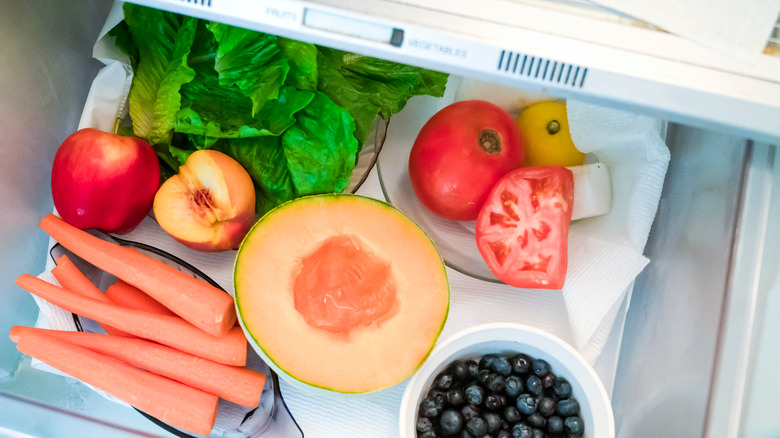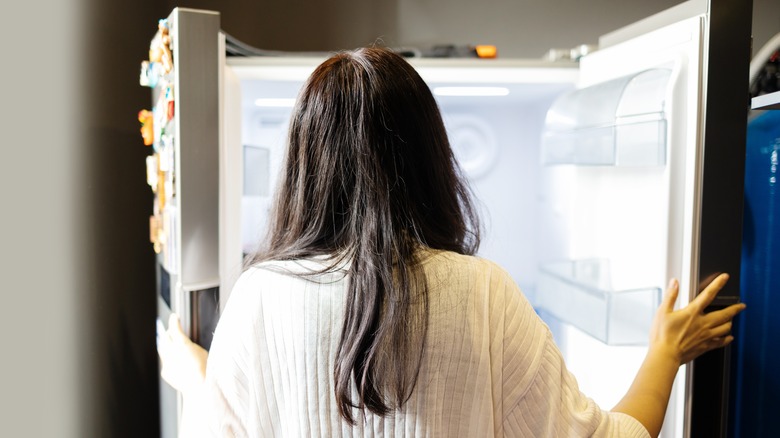The Foods You Should Be Storing In Your Fridge's Crisper Drawer
Most people know that refrigerator crisper drawers are where you deposit all the fruits and vegetables you buy and swear you will use before they go bad. But have you ever stopped to consider what they actually do or if they're set up correctly for what you're putting in them? If your fruits and vegetables aren't lasting as long as they should, chances are your drawers are set up wrong.
Typically, crisper drawers are located at the bottom of your refrigerator, and many models have two. They work by controlling airflow. Each drawer has a sliding control that either opens or closes a vent to let air circulate or trap it inside. When the vent is opened, the drawer is set up for low humidity; closing it increases the humidity. This creates an optimal environment for fruits and veggies, but you have to know which ones go where. For instance, drawers with open vents (low humidity) are best for many fruits, like apples, avocados, peaches, and pears, which produce ethylene gas. This gas plays a part in ripening fruits, but storing them in a drawer with an open vent helps disperse the ethylene so the fruits don't ripen too quickly. You could also store these fruits in the main part of your fridge, as it is a dry environment with good airflow. (So long as it's not overpacked.)
On the other hand, high-humidity settings are the best for leafy and thin-skinned vegetables, like romaine lettuce, carrots, cucumbers, broccoli, and peppers, that are prone to wilting or losing moisture. A closed vent helps prevent this by limiting airflow, keeping more moisture inside, and preventing ethylene gas from entering and causing rot.
To trap or not to trap (ethylene gas)
If you want to keep fruits from ripening too quickly, putting them in a low-humidity crisper drawer can help. However, what if you want your fruits to ripen quickly? You may have heard about using fruit to ripen an avocado, a method that uses ethylene gas to speed up the process. Well, this can also extend to your crisper drawer, as storing ethylene-producing fruits in a high-humidity crisper can help them ripen faster because you're trapping the gas inside, as opposed to letting it disperse.
However, this can impact ethylene-sensitive produce, namely vegetables, that you're not trying to ripen if you're not careful. This is why if you're going to use ethylene to ripen something, it should be done either in a high-humidity drawer on its own or on your counter. The last thing you want to do is try to ripen something in a crisper drawer full of veggies because you'll end up with a lot of rot and not much reward.
While there are many incorrect ways to use fridge drawers, there are also many useful ways that they can extend the life of your produce or help ripen them when needed. The real trick is remembering what you bought and eating it before it turns into a petrified mess. As useful as crisper drawers are, they still can't overcome forgetfulness!

